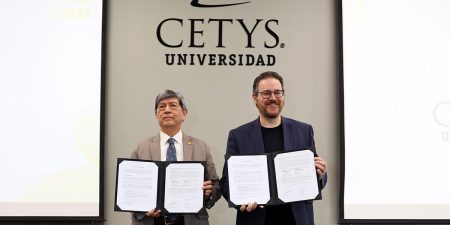Advanced materials represent the capability to design and create materials with specific, desired properties that address particular needs, considering their inherent attributes and application in various industrial sectors.
In some scenarios, combining different materials result in composites that surpass the properties of their individual components. For instance, it’s possible to enhance the conductivity of two metals or one metal by blending it with another. However, the achieved conductivity isn’t just the sum of their traits. Instead, the enhancements arise from effectively managing these materials at a structural level.
Professor Amanda Nieto-Sánchez, the Academic Coordinator of the Master’s Degree in Engineering and Innovation at CETYS University’s International Campus in Ensenada, notes a significant demand emerging from diverse engineering domains like aerospace, construction, electronics, and telecommunications. These demands are fueled by growth or increased processing needs.
«Materials that deliver enhanced conductivity, minimize energy losses, and curtail information leakage, thus optimizing processes, are in high demand. When materials face specific conditions or mechanical stresses, there is a possibility of losses during the process. However, by factoring in their inherent structure and intended application, we can broaden the range of potential applications,» explains the CETYS Expert.
She points out that certain materials or technologies emerge from fundamental scientific applications, such as Astronomy, which underpins modern smartphone technology. This evolution typically begins with material creation, followed by identifying properties that can be enhanced and then exploring practical applications. Additionally, some materials arise out of necessity – when a material with specific attributes is needed, it can be tailored to suit evolving corporate or technological needs.
«The ongoing quest revolves around developing materials that: are sturdier, more enduring, exhibit enhanced electrical conductivity, and offer fortified resistance or variations in electrical conductance. There’s a strong effort to align technological needs with sustainability goals – yielding materials that degrade seamlessly, are easy to process, and can be recycled without compromising their essential traits,» the professor elaborate.

Reflecting on the fact that material sciences are not a recent development, she underscores the substantial advancement in technology that now facilitates in-depth analysis of these materials, offering access to tools for understanding their intricate structures. This technological advancement enables the acquisition of knowledge for effecting changes. What was once envisioned as the materials of the future three decades ago is now the reality of the present.
In response to this technological era, CETYS University presents a Master’s Degree in Engineering and Innovation. Students within this program seek to optimize processes, propose innovative materials, or integrate sustainability elements into their operations. The program encompasses four areas of specialization: Manufacturing Systems Design, Information Systems and Technologies, Industrial Automation Systems and Processes, and Industrial Sustainability.









Leave your comment